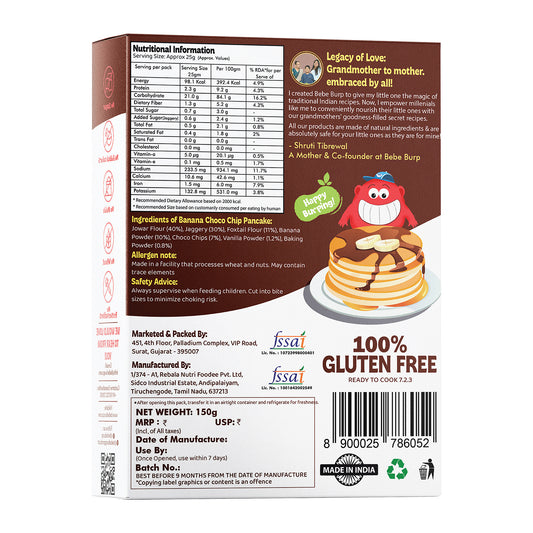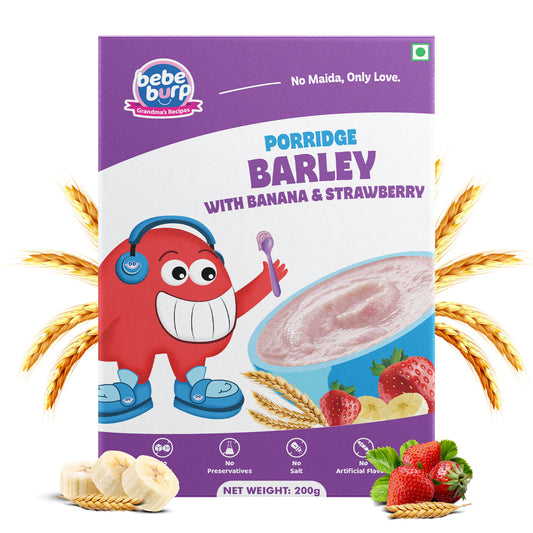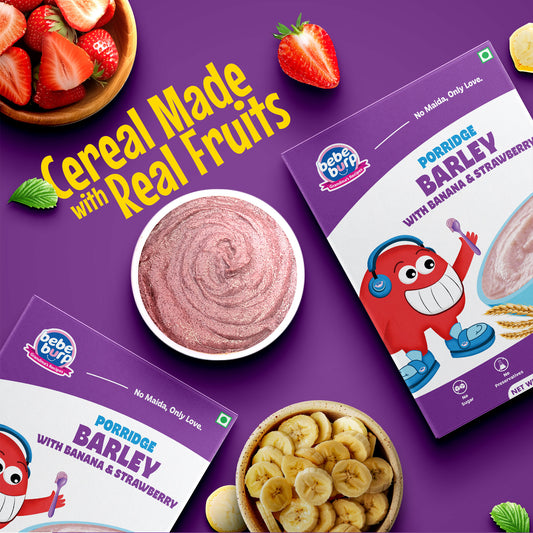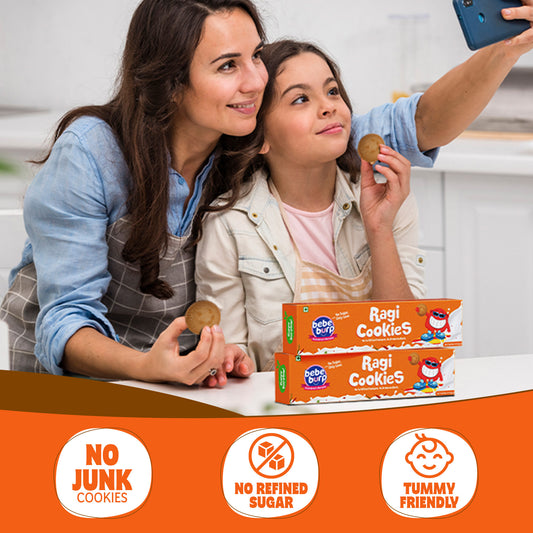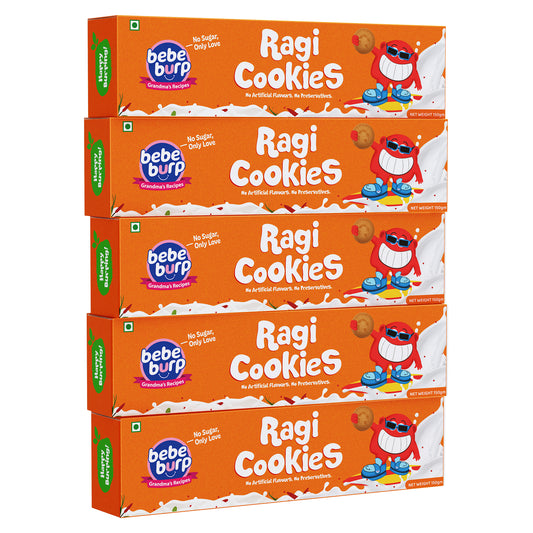If you’re a parent to a toddler, one of the biggest challenges that you face must be getting your independent toddler to chew food. An act that seems natural to us might not be the same for the little ones who are just getting used to the concept of eating solid food items. There will be days when you might lose your patience while trying to feed your child and force him to chew food. But you know it well that using force (or exhibiting anger) is not the ideal solution to get children to listen to you. You need the right approach to get him to chew food.
What Is Chewing?
In simple terms, the act of breaking down the food in the mouth by crushing and grinding it, as a way to stimulate the digestive process, is termed as chewing.
When Can a Baby Start Chewing Food?
Babies start experimenting with their mouth by using their fingers and other toys. The act of chewing mainly begins when they are close to completing a year. This is precisely why most parents are advised to introduce new food items in this phase, to encourage that chewing activity. The coordination of the tongue, jaws, and swallowing is the core part of the act of chewing food properly.
Can Babies Chew Food Without Teeth?
Most of the chewing activity is conducted by the molar teeth in the jaw. While your little one might not have molars until he is around 1.5 years or so, the gums are healthy enough for light chewing activities. The chewing movement and technique are all that’s left to learn.
Why Is Chewing Food a Problem for Some Toddlers?
No child can start chewing food right away. Every child has his own learning curve and most kids start chewing food when they reach the toddler stage. At times, a few kids can pose numerous problems around it, which are primarily due to a few significant reasons.
- Lack of Interest in Food
Some children might be exposed to a meal plan that has similar food items repeating quite often. At times, they also have an affinity for easy to chew foods making them lose their interest in attempting to try foods with different tastes and textures.
- An Absence of Lumpy Foods in Early Stages
By the time a child turns nearly a year old, it is recommended that different tastes and textures of foods be introduced to him. For a child purely dependent on breast milk by this age, chewing can be quite a difficult task to handle later in life.
- Delayed Introduction to Solid Foods
Chewing is a skill that needs development pretty early in life. If you choose to introduce solids only after he has grown up, your child may experience difficulty in accepting such food items and would prefer to drink milk all the time.
Tips to Teach a Child to Chew Food
Your child may have some difficulty in chewing his food as he begins to learn it initially and it is normal. With a few tips, you can make that more comfortable for him as well as peaceful for you, too.
- Keep Yourself Calm
Before you even attempt to start teaching your little one how to chew, there needs to exist an atmosphere of peace and calm. If your little one is upset and is not in the mood, it’s not going to be easy for you to get him to chew food, and as a result, you might lose your patience. Your own stress can counteract the appetite of the child and prevent him from any attempts at chewing his food. So you must ensure that you don’t lose your calm while trying to get your child to eat and chew food. Make mealtimes a fun activity.
- Pick Appropriate Food Items
While it is essential that you introduce a variety of foods to your child to help him meet nutritional requirements, you must note that he should be able to chew whatever you feed him. Giving him grapes or popcorn might not be a great choice if he can’t chew them well. The risk of foods being lodged in his throat and causing him to choke is quite real.
- Feed Him When He’s Hungry
Children find chewing to be a needless activity and would do everything they can to avoid it. A child with his stomach full will barely even touch any food item that requires chewing. Therefore, turn the tables by offering those items when your child’s hunger is at its peak. He might resist initially but the hunger will soon take over and leave him no choice but to eat the food by chewing it well.
- Let Him Eat On His Own
Children who refuse to chew are usually self-driven and want to do things their way. You can use this quality to your advantage as well. Set up his mealtime with the foods in a bowl and give him a small spoon. He will do everything he can to use the spoon properly, even if it involves eating foods that require him to chew them properly. Don’t fret if he manages only a few bites. That’s a pretty good start on its own.
- Opt for a Fruit Feeder
Fruits are quite essential for toddlers but it’s difficult for most toddlers to chew them. Some children tend to slurp on them to get the flavour and leave the fruit as is while others may refuse to eat the fruit. If your toddler refuses to eat the fruit, you should get a fruit feeder. These are mesh bags that hold the fruit pieces together. Since they are FDA approved, kids can use them to lick and feel the fruit, as well as bite them comfortably.
- Prepare Small Food Items That Are Soft
As your little one grows, he will reach a stage, where he will be able to eat and chew food of different tastes and textures. But while he is young, you need to be easy on him and take it slow. You can make healthy and tasty finger foods for him that he can easily chew on. Prepare something that is easy to chew on and melts in the mouth soon enough.
- Allow Your Child to Use a Grabber Toy
Apart from chewing on foods, children also take their time in understanding how to use their hands to feed themselves. With a variety of food textures, there will be instances where your toddler may fail to pick up a fruit from the plate or let it slip out of his hands. Getting a grabber toy can help. It will stimulate his motor senses and give him the confidence to experiment with chewing.
A Word of Caution
Even if your child shows rapid progress, it is important to keep away from hard food items like chocolates or salads until he can learn to chew properly. These can even harm the gums, at times, let alone the choking hazard they pose.
Once you know how to teach your baby to chew food, your little one’s mealtimes won’t be hectic. And before you know it, your child will be picking food from your plate and enjoy it too!
Tags : organic baby food, baby food , instant baby food, baby food 6 months, baby food at 4 months, baby food at 4 months, baby food at 4 months, baby food healthy, gerber, nestle, Holle, Evermaa, slurpfarm, cookies, cookies recepie, oatmeal cookies, ragi cookies, cookies near me, baby cookies, baby biscuits Website tahgs : Keyword 6 month baby food chart, baby food, 7 months baby food, 7 months baby food chart, 7 month baby food chart, 6 month baby food, 10 months baby food, 1 year baby food, baby food chart, 10 months baby food chart, farex baby food, baby food recipes 6-8 months, baby food product, 6 month old baby food, 4 month baby food, 8 month baby food chart, 1 year baby food chart, 11 month baby food, 8 month baby food recipes, 5 months baby food chart, protein powder, whey protein powder, best protein powder, amway protein powder, best protein powder in india, women protein powder, protein powder for men, b protein powder, nutrilite protein powder, oziva protein powder, d protein powder, ensure protein powder, protein powder for weight gain, best protein powder for weight gain, vestige protein powder, protein powder for women, herbalife protein powder, protein powder for weight loss, porridge, porridge meaning, porridge meaning in hindi, porridge oats, porridge pronunciation, rice porridge, porridge in hindi, ragi porridge, what is porridge, porridge meaning in english, porridge meaning in tamil, porridge meaning in telugu, porridge meaning in bengali, porridge recipe, oatmeal porridge, wheat porridge.



